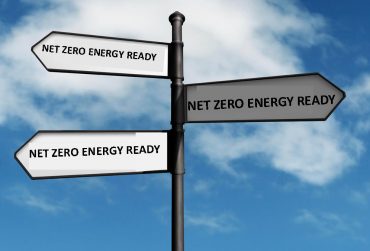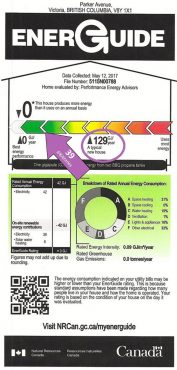
John Bleasby
Finding a path through Canada’s energy-efficiency certification programs: Part Two
Canadian ContractorNR Canada teams up with the CHBA team up to help builders navigate their way
Canadian Contractor’s review of certifiable energy-efficiency and sustainable building programs in Canada continues with a look at government and industry-sponsored programs that address energy-efficiency.
As Part One of our series explained, Passive Homes’ bold energy efficiency principles have been industry-leading for several decades. Despite that leadership, however, there is an upfront cost of being Passive House compliant, both with construction methods and verification processes, that has confined them to niche market custom homes. Also, due to lot size, orientation restrictions, and proximity to nearby structures, many existing homes or those in production developments may not be able to enjoy the optimal energy-efficient orientations required by Passive House design.

Each of the various energy-efficiency programs want to get to the same place. Finding the program that works for your business is the trick.
Passive House spawned R-2000, the basis of today’s energy-efficiency programs
Yet Canada’s Passive House movement has inspired energy-efficiency programs that offer more easily attainable thresholds of improvement for the mainstream industry. R-2000, developed by Natural Resources Canada (NRCan) in the 80’s comes immediately to mind. Harold Orr’s breakthrough Saskatchewan Conservation House built in 1977 was, in fact, the country’s first certified Passive House, a project that Sonja Winkelmann, Director of the CHBA’s Net Zero Energy Housing Council, links with R-2000. “Looking back, the Saskatchewan Conservation House built in the 1970’s was when HRVs were born and the R-2000 program began.”
“R-2000 was developed by Natural Resources Canada in collaboration with others in the energy efficiency sector more than 35 years ago,” the Natural Resources Canada website says. “Home building technology is always changing and improving because of research. An updated R-2000 Standard came into effect in July 2012. Homes built to the new R-2000 Standard are on average 50% more energy-efficient than typical new homes built to code.” They can, in fact, be up to 80 per cent more efficient.
What it takes to be an R-2000 builder
Homes built to R-2000 standards have the type of energy-efficiency features one would expect of a Federal ministry’s flagship program: high insulation values in walls, ceilings and basements; high-efficiency windows and doors and heating; whole-house mechanical ventilation; minimal air leaking from the house; and water-conserving fixtures such as taps and showerheads. Homes that meet the requirements receive a certificate and a label affixed to the home’s electrical panel.
Builders are trained to be R-2000 compliant and licensed. They must also build a demonstration house that must be verified by a licensed third party service organization. Beyond that, it’s an on-going commitment — R-2000 builders must construct at least one R-2000 certified house every three years and attend R-2000 builder update workshops every two years.
However, before anything is built, energy performance modelling is required, as it is for a Passive House (see Part One of this series). NR Canada offers information on a number of modelling software solutions for specific purposes. In the case of R-2000, the modelling software is called HOT2000. It’s a predicative software program available in two version; one for the general public and the building trade, and a second version for use and training by licensed third party service organizations.

Here’s how NRCan’s program and Passive house programs compare in terms of energy-efficiency over current building code (aka ‘Reference House’). The broken lines indicate the upward potentials up to, and possibly even beyond Net Zero Energy Ready (NZE-R)
R-2000 is not without problems or critics
Although HOT2000 has been around for few years, the problem is that long-term follow-through has not been consistent, according to Wayne Rowbotham of EnertestCorporation in Orillia, Ontario. He’s observed that while architects, designers and builders show initial interest in pre-construction evaluations, they often back away due to difficulties absorbing the costs of extra work, and the costs of the evaluation analysis service and post-build recommended energy efficiency improvements.
Energy performance purists criticize that that R2000 falls short of its true potential. “R-2000 simply has not kept pace with changing codes or government initiatives, nor does it deliver on the requirements for energy savings in our shifting climate” writes Paul Kealy in ecobuilt.com. While crediting that R-2000 has raised energy-efficiency awareness among industry and consumers, R-2000 homes, he says, “still require a furnace or boiler, the same as any other conventionally built home or building would require.”
Nevertheless, R-2000 homes score very highly in terms of energy performance improvement versus standard code (aka the “Reference House”), anywhere from 50 to 80 per cent better. Certification results in a sticker mounted on the home’s main circuit panel. In addition, R-2000 certified homes are eligible for mortgage insurance premium discounts between 10 and 25 per cent from organizations like CMHC and Genworth, depending on their EnerGuide rating.

The CHBA says the average energy consumption for homes in their program is 39 GJ/year target (arrow) versus a typical house rating of 129 GJ/year (circle)
CHBA and “Net Zero Energy Ready”
This debate between energy-efficiency purists and builders working at ground level can be distracting. Everybody wants to get to the same place basically, but there are many routes to choose. This is where the CHBA comes in. Their well-marketed concept of Net Zero Energy Ready (NZE-r) acts in effect as a go-between. It’s a voluntary program that relies upon existing codes and standards, and bundles various programs like R-2000 and its lighter-weight cousin Energy Star into concepts that Canadian home
builders can both understand and attain.
“We are not a standard body; we are an industry association. Therefore we do not issue standards or certifications,” explains the CHBA’s Winkelmann. Consider it more of an builder and consumer awareness initiative. Winkelmann continues, saying that the CHBA Net Zero Energy Ready program is attempting bring these like-minded parties and elements together — the energy-efficiency labeling program, the builder, and the energy advisor or service organization — via the code process. “Each has a role to play to ensure a home meets the requirements under our Net Zero Energy Ready program. The CHBA has put together technical requirements for the home, and administrative requirements for the participants. The builder, the energy advisor and the service organizations all have to meet those specific requirements. The builder and the energy advisors ensure that the building meets the technical requirements, while the service organization acts as the quality assurance that produces the label, either a Net Zero Ready, R-2000, or NetZero label, as well as the EnerGuide label that confirms the actual energy performance value of the house.” However, while the CHBA program hopes to grow, Winkelmann admits the overall reach is currently narrow. “Our program tackles a very small percentage of homes.”
A streamlined pathway to higher energy performance
Winkelmann adds that the CHBA program has a minimum energy efficiency requirement of 33 per cent over the reference house (current code). However, the average house in the CHBA program achieves a 65 per cent improvement – realizing an average annual energy consumption of about 39 gigajoules for a single family home. Some homes in the program have achieved as much as an 80 per cent improvement over the reference house, she says. Furthermore, if a house adds energy generation like PV arrays, they can move right up to Net Zero Energy.
Winkelmann says the CHBA role is shows builders what technical requirements are needed. “For example, if a builder chooses to build to Energy Star (approx. 20 per cent better than code), we tell them, “Here are the elements that that you need to add, maybe 10 to 15 other things, to bring them yourself to Net Zero Energy Ready. We’re trying to show builders the logical progression of where to go next, and what needs to happen to get them all the way up to NetZero Ready.”
However, she stresses the point that CHBA initiatives don’t supersede anything, just present add-ons to existing programs. “We bring all those pieces together. Our program says, ‘You basically need to do all these things, plus a couple of additional things, to get to Net Zero.’ It’s been done very strategically. It’s not anything different or outside of the code other than the voluntary processes that they’re already used to. We’re just streamlining it.”
Next: Part Three….
Why BuiltGreen may be the home building certification program all of Canada is looking for.
Did you miss Part One of this series?
Passive House leads the chart of energy-efficiency programs
Got feedback? Make your opinion count by using the comment section below,
or by sending an email to:
JBleasby@canadiancontractor.ca
Follow John on Instagram and on Twitter for notifications about his latest posts


Leave a Reply